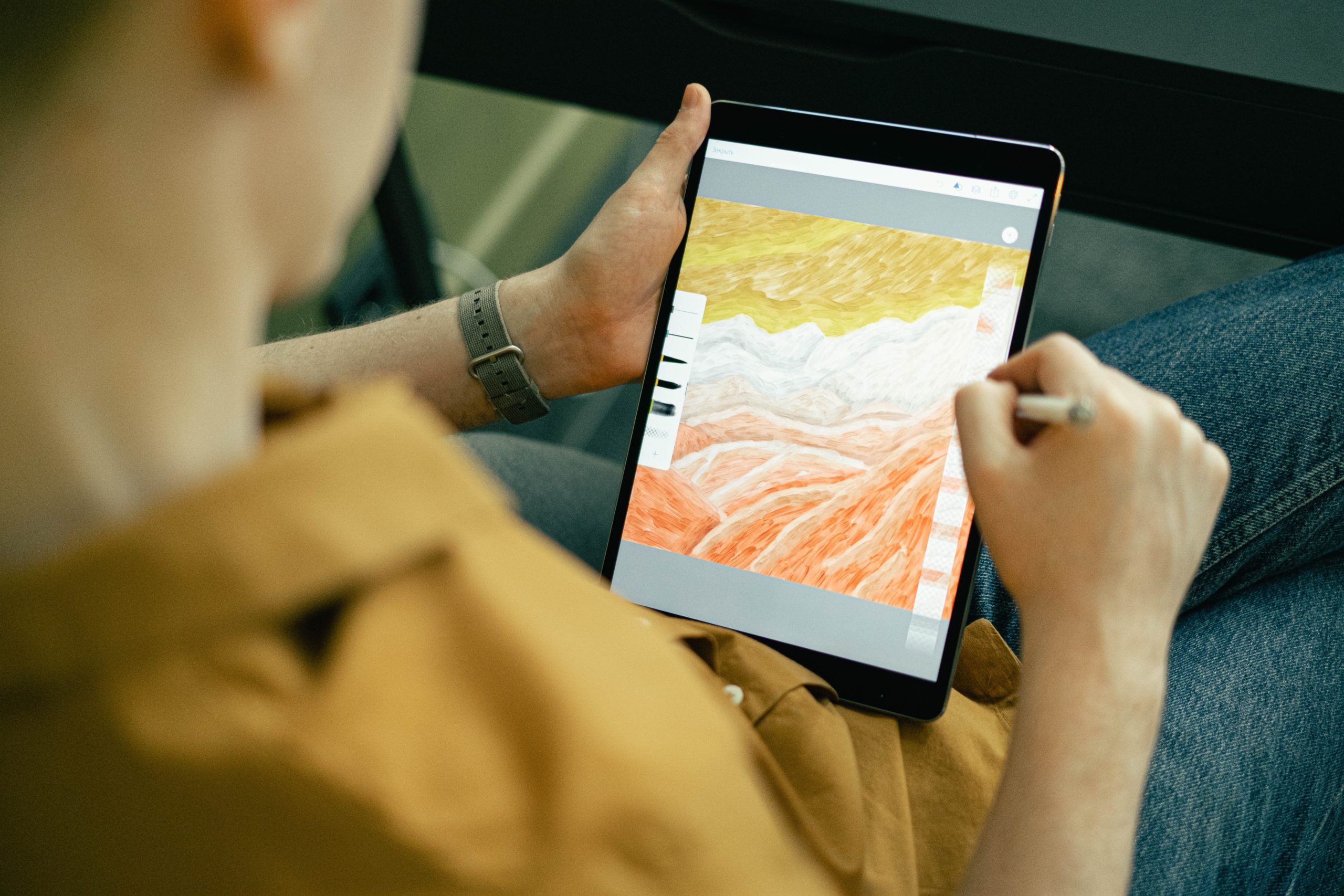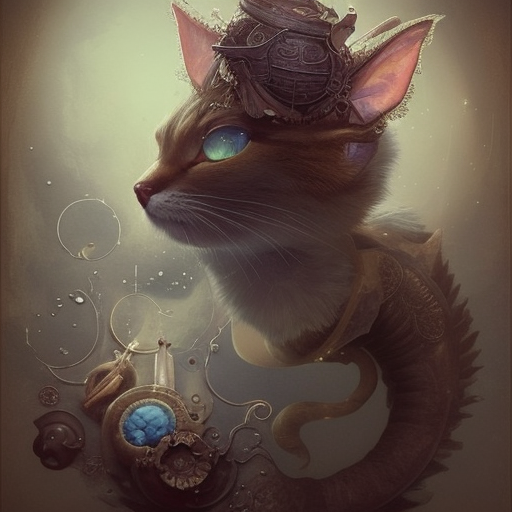
Though you may not be familiar with the concept, there’s a high chance you’ve heard about NFTs before. NFTs have been all the rage lately, with everyone from celebrities to major brands getting in on the action.
And, with the rate at which people trade in NFTs, it’s not surprising how much attention these NFTs have gotten lately. One NFT artwork sold by an artist known as Pak has been sold for over $91 million as of December 2021. That’s remarkable!
Puzzled about what these NFTs are? Fret not! In this blog, we’ll tell you everything about how to create an NFT, the different types of NFTs, and ways to mint an NFT. So, if you’re itching to jump on the NFT bandwagon, you’re in for a treat!
NFT 101: What are NFTs, and How Do They Work?
NFTs (non-fungible tokens) are unique digital assets that are bought and sold online, frequently with cryptocurrency. They are non-fungible, which simply means that they can’t be replicated, forged, or exchanged for another asset of similar value.
Most NFTs are on the Ethereum cryptocurrency’s blockchain, a digital ledger that records transactions. Some common NFT assets are images, videos, music, GIFs, and collectibles.
Because there is only one version of the assets made, NFTs hold a high value. Also, an NFT can only have one owner at a time, meaning that no one can attempt to mint the same NFT on the blockchain. NFTs’ unique data makes it easy to validate their ownership and the transfer of tokens between owners. To purchase NFTs, first learn how to buy Bitcoin in Canada or acquire other cryptocurrencies to fund the transactions.
Types of NFTs
In this section, we’ll be looking at six of the different types of NFTs that exist.
1. Artworks
Artworks are the most popular and expensive type of NFTs. Presently, the artworks are mainly virtual, with some being made by AI art tools. They come with a public certificate of authenticity and ownership that is issued by the digital ledger on which they are stored.
Also, these virtual artworks are sold online as if they are physical items, and they include GIFs, short videos, etc.
2. Memes

Weird, right? No one could have guessed that memes could have made such an impact in the NFT world and become such valuable digital assets. Meme creators have no doubt reaped the benefits of trading in the meme market.
For instance, the popular Doge meme is the most expensive meme non-fungible token (NFT) to ever be sold at $4 million!
3. Collectibles
Here’s a fun fact: collectibles were the first types of NFTs ever used. They are just like physical collectibles like toys or stamps but in digital form. There are different types of trading cards and collectibles listed by companies in the NFT marketplace — as long as they’re considered collectible, of course.
4. Virtual Fashion
This type of NFT is a dream come true for all our fashionistas in the house. Instead of buying NFT artwork, you can buy clothing and accessories to style up your digital avatars and video game characters. Even popular fashion brands like Louis Vuitton and Burberry have come out with a line of NFT fashion for digital avatars.

5. Domain Names
NFT users can register and sell domain names. These types of NFTs are crypto domains minted on a blockchain, like Ethereum, for example. The reason why they are so unique is that they’re decentralized and can be linked to crypto wallets. The most coveted domain extension is ‘.eth’.
6. Utility NFTs
These types of NFTs can be used to represent real-world assets or access rights. For example, a utility NFT could be used to represent a ticket to an event, a virtual currency, a membership card, or a digital key.
Unlike other types of NFTs, utility NFTs are not just used for their aesthetic value. Instead, they have a specific function that makes them valuable to their holder.
Popular NFT Marketplaces
If you’re wondering about the best places to buy or sell NFTs, we’ve created a list of some of the best NFT marketplaces:
- Rarible – Rarible is a marketplace that allows artists and creators to sell single works of art and collections. It supports Ethereum, Flow, and Tezos blockchains.
- Makersplace: To list an NFT on Makersplace, you’ll need an invitation from a member of the Makersplace community. Nevertheless, it’s an easy-to-use platform, and you’re not restricted to using Ethereum to buy NFTs; you can pay with a credit card.
- OpenSea: This is the most established NFT marketplace out there. It holds a wide range of NFT categories, from artworks to collectibles, virtual lands, and domain names. OpenSea is also a non-exclusive platform, meaning that you can mint your NFT and start selling without going through a review process.
- Foundation: Just like Makersplace, Foundation is an invite-only platform. NFTs can be resold on OpenSea and Rarible, and you’ll receive a 10 % royalty for each secondary sale.
Related: Meme Design And Making A Meme Go Viral
Step-by-Step Guide on How to Create an NFT
We’re finally at the juicy part! Now, keep in mind that anyone with a decent amount of money can mint an NFT. It doesn’t matter whether you’re a musician, a collector, or you own a company — it’s easy to create your very own NFT.
And now, with this step-by-step guide, we will break it down for you:
1. Choose your preferred NFT
Before making an NFT, you’ll have to decide what type of NFT you want to create first. As we’ve listed earlier, you have several options for choosing which type you want to make. You can choose from collectibles, pictures, and games to tickets, memes, and even events.
Remember that it’s the uniqueness of an NFT that gives it value – make it yours! (To avoid legal trouble, ensure that you own the intellectual property rights to any item you want to turn into an NFT.)
2. Choose your blockchain and set up your digital wallet
The next step is to figure out the kind of blockchain technology you plan to use for your NFT. You have options like Ethereum (the most popular), Cosmos, and Binance Smart Chain.
Now, you’ll need to set up a digital wallet that will provide you access to digital assets. It’s important to make sure that the wallet you select is compatible with the blockchain and NFT marketplace you plan to use for minting your NFTs.
Some of the best NFT wallets include Metamask, Math Wallet, AlphaWallet, Enjin, Trust Wallet, and Coinbase Wallet.
After you’ve set up your wallet, the next step is buying cryptocurrency. Most NFT platforms accept the cryptocurrency of the Ethereum blockchain platform, known as Ether.
If you by any chance already own some cryptocurrency elsewhere, you can connect it to your digital wallet so you can use it to create and sell NFTs.
3. Look for an NFT marketplace
Once you have a digital wallet and some cryptocurrency, the real work begins. It’s time to create and sell your NFT. For that, you’ll need to choose an NFT marketplace.
Good thing we’ve already given you some ideas on a few NFT marketplaces you can try out, right? At least it’ll help you explore and find out which is a good fit for you. These platforms will simplify the process for people like you who are excited to experience the world of NFTs. The NFT marketplace sold $3.4 billion worth of NFTs in August 2021 alone.
Some marketplaces will require you to authenticate your NFT on the blockchain, and others like Rarible allow lazy minting. With lazy minting, you can bypass some fees by putting up your NFT for sale without writing it on the blockchain. This fee will then be passed on to the buyer of the NFT.
After choosing your NFT marketplace, you’ll have to connect it to your digital wallet, which allows you to pay any fees needed to mint your NFT and hold any sales proceeds.
5. It’s time to create your NFT!
Done connecting your wallet to your NFT platform? Now, it’s time to mint! The NFT marketplace you’re using should have a step-by-step guide for uploading your digital file to their platform.
This will allow you to turn your digital file (a PNG, GIF, MP3, or other file types) into an NFT that you can sell. Let’s give you an example using OpenSea:
Step 1
First, go to OpenSea‘s website and click on ”Profile” in the upper right bar. A new page will display, requesting that you connect your wallet. Select MetaMask.
Step 2
A new page will come up asking you to connect your wallet. Select your digital wallet (like MetaMask, for example).To allow OpenSea to access your wallet, make sure you give it all the permissions it needs. Then, sign the signature request. Accept the Terms and Conditions. If you don’t have ETH, just click “Add Funds”. You can make a crypto deposit or use a debit/credit card.
Step 3
Next, you need to create your first NFT collection now that your account is ready to process transactions. Head on to your profile and select “My Collection,” and hit “Create” to start a new one. Fill out the properties asked, starting from the URL of your NFT collection on OpenSea, to a description, category, and links to your website and social networks.
Step 4
You will then be asked to insert your payout wallet address. Go to the wallet icon and click on your address. It will be automatically copied, and then you can paste it into the required field. Select the payment tokens which you want to use to buy and sell NFTS. Next, click on “Create.” Your collection has finally been completed.
Step 5
Now, it’s time to start minting your NFT. To do that, go to the collection you’ve created and click on “Add Item” at the top right bar. Upload the type of file you want to use for your NFT. This could be an image, audio, or video.
Input the details of your item: the name and a description. Choose the collection where you want your NFT to appear. Fill in the properties of your NFT, such as the color, ticker symbol, etc.
Fill in the levels which show the strengths and weaknesses of your NFT. For instance, you can input that your NFT has a 5/10 strength or speed level. Include some statistics in your NFT.
Next, pick whether your NFT has unlockable and explicit (or sensitive) content.
Step 6
Lastly, choose the number of copies that can be minted, as well as the issuing blockchain. Click “Create,” and voila! Your new item will be added to your collection as your very own NFT.
Keep in mind that every OpenSea transaction that occurs on the site is subject to a 2.5% fee.
6. It’s time to sell!
The last thing to consider after making an NFT is how you want to monetize it. Depending on the kind of NFT marketplace you’re using, you can either:
- Use a timed auction, where those interested in buying your NFT are given a specific time limit to submit their final bid;
- Use an unlimited auction, which isn’t bound by a time limit, and you have the power to end the auction whenever you please;
- Sell your NFT at a fixed price.
Related: Generating Images: A Comparison of DALL-E 1 and DALL-E 2
How to Create NFTs? (FAQ)
1. How much does it cost to make an NFT?
There’s no fixed answer to this question because the cost depends on gas fees and site fees associated with creating your NFTs.
Blockchains like Ethereum will charge you a minimum of $70 to secure the token, while some others let you mint completely free of charge. Site fees are about $300, though some sites allow you to list NFTs for free.
2. What are gas fees, and can I avoid them?
Gas fees are charges you need to pay on the Ethereum blockchain to perform a function, which, in this case, includes making an NFT. Think of gas fees as the processing fees you have to pay to your bank each time you make a transaction online.
Gas fees help maintain network security and ensure that transactions on any blockchain are safe from unwanted spammers.
They’re measured in gwei (i.e a unit of gas that is used in the Ethereum network), and they can go up and down depending on how heavy the use of the blockchain is.
Bet you’re wondering if you can avoid paying a gas fee. Of course! Some NFT marketplaces like Rarible offer gas-free minting. The platform places the gas fee on the buyer of the NFT and not the creator.
3. Is an NFT a good investment?
Unfortunately, there’s no easy answer to this question. It depends on several factors, including the specific NFT you’re considering, the market conditions at the time, and your own investment goals.
If you’re thinking about investing in an NFT, it’s important to do your research and understand the risks involved. But if you’re comfortable with the risks, an NFT could be a good way to diversify your portfolio and potentially make some profits.
4. How does an NFT make money?
Great question! There are a few ways through which an NFT can make money. The most common way is through royalties. When someone buys an NFT, they usually have to pay a small royalty to the creator every time they use it. This means that if someone buys an NFT and then sells it later, the creator will still get a cut of the sale.
Another way is through advertisements. Some NFTs come with built-in advertising space that can be sold to monetize the NFT. Additionally, some NFT creators will sell advertising space on their websites or social media accounts to promote NFTs.
Generate High-Quality Art with AI Text-to-Art Generator
Looking for a simpler way to create high-quality NFTs? Let Simplified help you out! With a mere text prompt, you can create beautiful works of art that are sure to make waves in the crypto world.
With different camera angles, styling, and filters, there’s absolutely nothing stopping you from creating the best NFT designs ever!
But don’t just take our word for it. Sign up for free on Simplified and see how you can generate high-quality art with our AI image generator!







![16 Best AI Headshot Generators in 2025 [Free & Paid] 16 Best AI Headshot Generators in 2025 [Free & Paid]](https://siteimages.simplified.com/blog/Best-AI-Headshot-Generators-2-01.png?auto=compress&fit=crop&fm=png&h=400&w=400)


